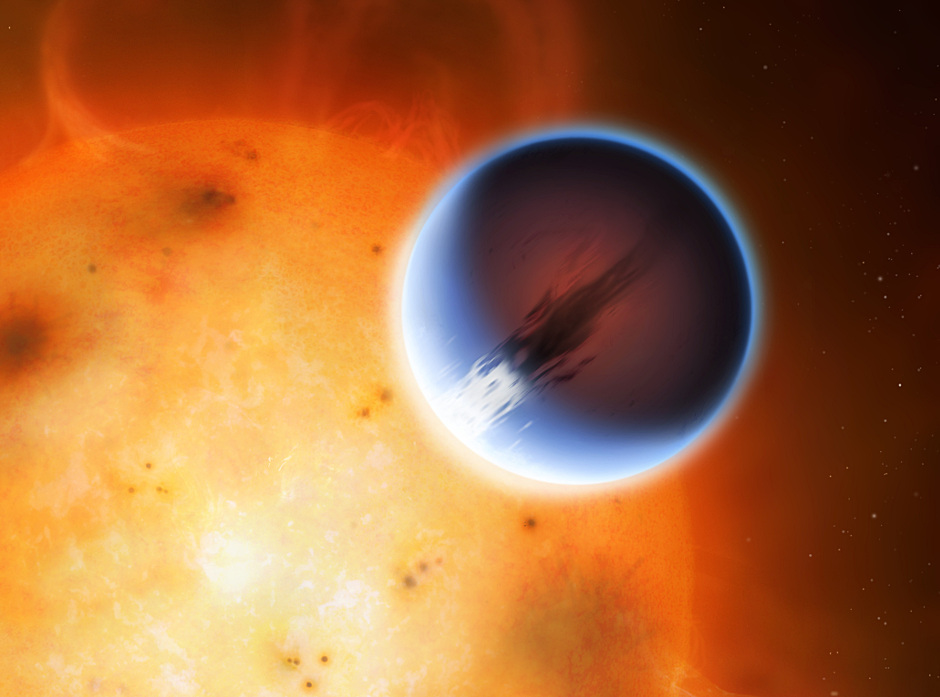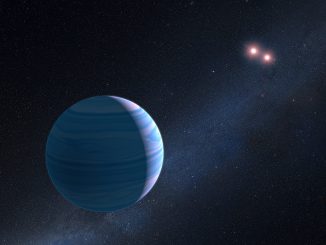
Commenting on the discovery lead researcher Tom Louden, of the University of Warwick’s Astrophysics group, said: “This is the first ever weather map from outside of our solar system. Whilst we have previously known of wind on exoplanets, we have never before been able to directly measure and map a weather system.”
Discovered on the exoplanet HD 189733b, the Warwick researchers measured the velocities on the two sides of HD 189733b and found a strong wing moving at over 5,400mph blowing from its dayside to its night side. Mr. Louden explains:
“HD 189733b’s velocity was measured using high resolution spectroscopy of the sodium absorption featured in its atmosphere. As parts of HD 189733b’s atmosphere move towards or away from the Earth the Doppler effect changes the wavelength of this feature, which allows the velocity to be measured.”
The researchers say that the techniques used could help the study of Earth-like planets. Co-researcher, Dr. Peter Wheatley of the University of Warwick’s Astrophysics Group explains: “We are tremendously excited to have found a way to map weather systems on distant planets. As we develop the technique further we will be able to study wind flows in increasing detail and make weather maps of smaller planets. Ultimately this technique will allow us to image the weather systems on Earth-like planets.”
HD 189733b is one of the most studied of a class of planets known as “hot Jupiters.” At over 10% larger than Jupiter, but 180x closer to its star, HD 189733b has a temperature of 1800 °C. Its size and relatively closeness to our solar system make it a popular target for astronomers. Past research has shown that the day side of the planet would appear a bright shade of blue to the human eye, probably due to clouds of silicate particles high in its atmosphere.
The data was collected by HARPS, the High Accuracy Radial velocity Planet Searcher, in La Silla, Chile. The research is published by Astrophysical Journal Letters.



